Harshit Rana : The Express Pace Sensation Igniting India’s Campaign Down Under
AI Dark Side 2025: The Hidden Cost of Job Loss in the Age of Automation
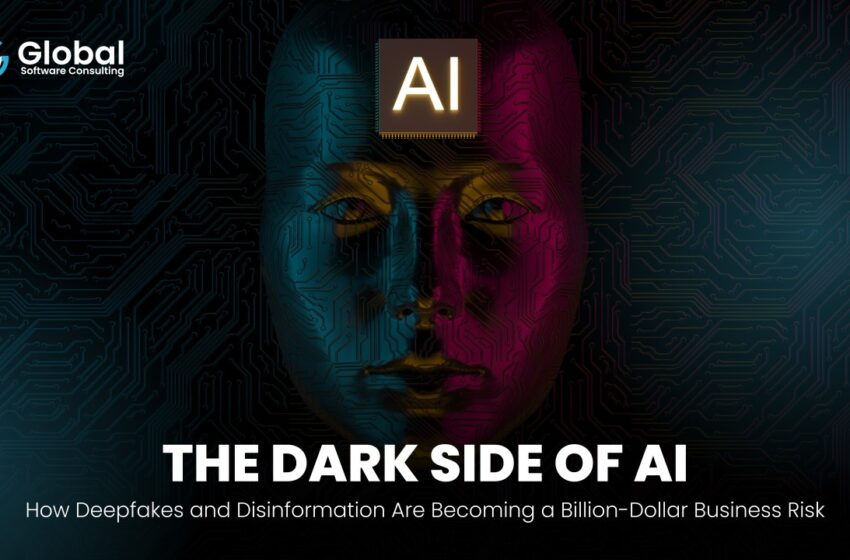
AI Dark Side 2025
AI Dark Side 2025:Will Create New Jobs but May Also Replace Some Artificial Intelligence (AI) is reshaping the global workforce, with both promising opportunities and significant challenges. While AI is expected to create numerous new job roles, it is also poised to replace some existing ones. Understanding this dual impact is crucial for businesses, workers, and policymakers alike. In this article, we explore how AI is transforming employment, the industries most affected, and what can be done to adapt to this evolving landscape.
AI as a Job Creator
Despite fears of job displacement, AI is generating new opportunities across various sectors. The demand for AI specialists, data scientists, and automation engineers has surged as companies integrate AI into their operations. According to reports, industries like healthcare, finance, and technology are seeing a boom in AI-related roles, leading to job creation rather than destruction.

Emerging AI-Driven Roles
1. AI and Machine Learning Engineers – These professionals develop algorithms and AI models that drive automation and data analysis.
2. Data Scientists and Analysts – As AI thrives on data, skilled professionals who can interpret and derive insights from data are in high demand.
3. Robotics Engineers – With AI playing a significant role in robotics, experts in this field are crucial in designing and maintaining AI-powered machines.
4. AI Ethics and Compliance Officers – The rise of AI also brings ethical concerns, necessitating roles that focus on responsible AI usage and governance.
5. AI Trainers and Human-AI Interaction Specialists – AI requires training and continuous improvement, creating roles centered around fine-tuning AI models.
These are just a few examples of new career paths emerging as a result of AI advancements. Many industries are also seeing AI enhance existing roles rather than replace them entirely.
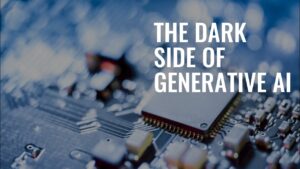
AI-Induced Job Displacement
While AI is creating new opportunities, it is also automating tasks traditionally performed by humans. This is particularly evident in industries that rely on repetitive, routine tasks.
As Artificial Intelligence (AI) continues to advance, its impact on the job market is becoming more apparent. While AI is creating new opportunities, it is also replacing certain roles, particularly those that involve repetitive, routine tasks. Job displacement due to AI and automation is a growing concern, as industries undergo significant transformations.
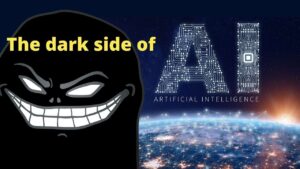
Industries Most Affected by AI Displacement
- Manufacturing and Production- AI-powered robots are automating assembly lines, reducing the need for human labor.
Smart factories use AI-driven machines for quality control, logistics, and warehouse operations. - Retail and Customer Service-Chatbots and virtual assistants are replacing human customer service representatives.
Self-checkout systems and automated inventory management reduce the demand for retail workers. - Transportation and Logistics-Self-driving trucks, delivery drones, and AI-powered logistics planning are reshaping the industry.
Ride-hailing services and public transport systems are exploring automation, reducing the need for human drivers. - Finance and Accounting-AI-driven algorithms perform data analysis, risk assessment, and fraud detection with greater accuracy.
Automated bookkeeping and tax preparation software are decreasing the demand for traditional accountants. - Administrative and Clerical Work-AI-powered virtual assistants handle scheduling, data entry, and document management.
Businesses are adopting AI tools for email filtering, transcription, and workflow automation.

Mitigating the Impact of AI Displacement
While AI is displacing some jobs, it is also changing the nature of work rather than eliminating employment altogether. Here’s how workers and industries can adapt
- Reskilling and Upskilling Programs-Governments and businesses should invest in AI-related training programs.
Workers should acquire digital skills, learn AI tools, and transition into roles that require human oversight of AI systems. - Shift Toward Human-AI Collaboration-AI should be used to augment human capabilities rather than replace workers entirely.
Employees should focus on roles that require creativity, critical thinking, and emotional intelligence. - Policy and Support Systems-Governments should implement policies to support displaced workers, including reemployment programs and financial assistance.
Encouraging entrepreneurship and innovation can help create new job opportunities. - Emphasis on Soft Skills-Jobs requiring interpersonal skills, problem-solving, and adaptability will remain valuable.
AI cannot replace human intuition, leadership, or emotional intelligence, making these skills essential for future employment.

Sectors Most Affected by AI Displacement
1. Manufacturing and Production – AI-powered robots are replacing human workers in assembly lines, warehousing, and logistics operations.
2. Retail and Customer Service – Chatbots and automated systems are reducing the need for human customer service representatives.
3. Transportation and Logistics – Self-driving technology is impacting jobs for truck drivers, delivery personnel, and transport operators.
4. Finance and Accounting – AI is automating routine financial analysis, bookkeeping, and auditing tasks, reducing the need for human accountants.
5. Administrative and Clerical Work – AI-driven automation tools are handling scheduling, data entry, and documentation tasks that previously required human intervention.
Although these trends indicate a shift in job requirements, it is important to note that AI does not completely eliminate jobs—it transforms them. Employees in affected sectors can pivot to roles that involve managing and overseeing AI systems.

The Future of Work: Adaptation and Upskilling
To mitigate job losses and harness AI’s potential, adaptation is key. Governments, businesses, and educational institutions must focus on upskilling and reskilling workers to prepare them for AI-driven job markets.
Artificial Intelligence (AI) is transforming industries at an unprecedented pace, disrupting traditional job roles while simultaneously creating new opportunities. As AI continues to evolve, the workforce must adapt to this technological shift to remain relevant in the job market. Adaptation and upskilling are crucial strategies for workers, businesses, and governments to thrive in the AI-driven future.

Why Adaptation and Upskilling Matter
AI is not just automating routine tasks—it is reshaping how work is done across various industries. Employees who proactively adapt and acquire new skills will have a competitive advantage, while those resistant to change may struggle to keep up. Upskilling is essential to bridge the gap between human capabilities and AI advancements.
As Artificial Intelligence (AI) continues to reshape industries, adaptation and upskilling have become essential for workforce survival and growth. AI is automating repetitive tasks, changing job roles, and demanding new skill sets. Workers who embrace change and enhance their skills will remain relevant, while those who resist may face job displacement. Here’s why adaptation and upskilling matter in the AI era.

1. AI is Reshaping the Job Market-AI is not just replacing jobs; it is transforming them. Many traditional roles are evolving to require a blend of human intelligence and AI-driven decision-making. Workers must adapt by acquiring digital literacy and technical expertise to stay competitive.
2. New Career Opportunities are Emerging-While AI is automating certain jobs, it is also creating new ones. Roles such as AI specialists, data scientists, automation engineers, and cybersecurity analysts are in high demand. Upskilling allows individuals to transition into these high-growth fields.
3. Enhancing Human-AI Collaboration-AI excels at processing vast amounts of data but lacks human creativity, emotional intelligence, and problem-solving abilities. Upskilling enables workers to complement AI rather than compete with it, fostering a collaborative and more productive work environment.
4. Job Security and Career Growth-Workers who continuously update their skills are more likely to secure stable employment and advance in their careers. Employers value employees who can adapt to technological shifts and leverage AI tools to drive innovation.
5. Competitive Advantage in the Workplace-Companies prefer hiring professionals who are tech-savvy and can integrate AI into business processes. Developing skills in AI, data analytics, and automation enhances job prospects and earning potential.
6. Future-Proofing the Workforce-The rapid pace of AI development means that job roles will continue to evolve. Lifelong learning and continuous skill development ensure that workers can navigate future technological disruptions without being left behind.
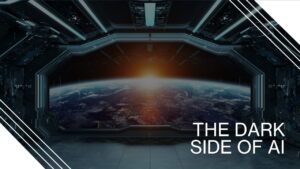
Key Areas for Upskilling
AI & Machine Learning – Understanding AI applications and how to work alongside AI systems.
Data Analysis & Digital Literacy – Gaining insights from AI-driven data and utilizing automation tools.
Soft Skills Development – Strengthening critical thinking, creativity, emotional intelligence, and leadership skills.
Cybersecurity & Ethical AI – Ensuring AI systems are secure and used responsibly.
Key Strategies for Workforce Adaptation
- Continuous Learning and Digital Literacy-Staying updated with AI trends and emerging technologies is crucial.
Learning digital tools, automation software, and data analytics will enhance job security. - Reskilling for AI-Integrated Roles-Workers in jobs at risk of automation should explore reskilling opportunities in AI-driven fields.
Training in areas like data science, machine learning, and robotics can open new career paths. - Encouraging Human-AI Collaboration-Rather than replacing humans, AI is often used to augment human capabilities.
Learning to work alongside AI systems can improve productivity and efficiency. - Focusing on Soft Skills-Critical thinking, creativity, emotional intelligence, and problem-solving are skills that AI cannot easily replicate.
These skills will become more valuable as AI handles technical and repetitive tasks. - Government and Corporate Initiatives-Governments should implement AI education programs and workforce transition policies.
Companies must invest in employee training to build an AI-ready workforce.

Industries Leading the Upskilling Movement
Technology – AI engineers, data analysts, and cybersecurity experts are in high demand.
Healthcare – AI-assisted diagnostics require professionals trained in AI applications.
Finance – Analysts and accountants must learn AI-powered financial tools.
Retail & E-commerce – AI-driven logistics and customer service require skilled operators.
Strategies for Workforce Adaptation
1. Education and Training Programs – Investing in STEM (Science, Technology, Engineering, and Mathematics) education ensures that future workers are equipped with AI-related skills.
2. Reskilling and Upskilling Initiatives – Existing employees should be trained in digital literacy, AI usage, and other emerging technologies.
3. Encouraging Human-AI Collaboration – AI should complement human workers rather than replace them entirely. Training employees to work alongside AI systems can boost productivity.
4. Government Policies and Support – Policymakers should implement workforce transition programs and support displaced workers with alternative employment opportunities.
5. Emphasizing Soft Skills – Creativity, problem-solving, and emotional intelligence remain areas where humans excel over AI. Encouraging the development of these skills ensures job security in an AI-driven world.
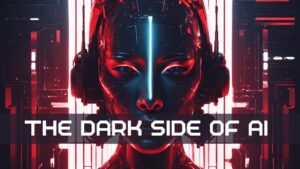
Conclusion
AI is neither a complete job destroyer nor a guaranteed job creator—it is a transformative force reshaping the workforce. While it is eliminating some roles, it is simultaneously generating new opportunities that require different skill sets. The key to thriving in this AI-driven era is adaptability.
Businesses must embrace AI as a tool for innovation rather than a replacement for human workers. Employees should focus on continuous learning and reskilling to remain relevant in the evolving job market. By striking a balance between AI implementation and workforce readiness, society can harness AI’s potential while minimizing its disruptive effects on employment.
The rise of artificial intelligence (AI) is reshaping the job market, bringing both opportunities and challenges. While AI will undoubtedly replace certain roles—especially those involving repetitive, rule-based tasks—it will also create new jobs, industries, and career paths that we cannot yet fully anticipate.
AI-driven automation is most likely to impact jobs in manufacturing, customer service, data entry, and transportation. However, this disruption is not new; throughout history, technological advancements have displaced some jobs while generating others. The key difference with AI is its ability to perform cognitive tasks, which means that even some knowledge-based professions may be affected.

On the other hand, AI will foster job creation in emerging fields such as AI development, data science, cybersecurity, and human-AI collaboration. Additionally, AI will enable workers to be more productive, automating routine aspects of jobs while allowing humans to focus on creative, strategic, and interpersonal tasks that machines cannot easily replicate.
The net impact of AI on employment will depend on how governments, businesses, and individuals respond to these changes. Investments in education and reskilling programs will be crucial to preparing the workforce for AI-driven industries. Ethical considerations and policies surrounding job displacement, fair wages, and workforce transition support will also play a significant role in shaping the future of work.
AI is not simply a job destroyer—it is a powerful tool that, if harnessed effectively, can enhance human potential and drive economic growth. The challenge lies in ensuring that the workforce is equipped to adapt to this transformation, embracing AI as an ally rather than a threat. By fostering a culture of continuous learning and innovation, society can strike a balance where AI complements human skills rather than replacing them entirely.
ALSO READ THIS:AI-Powered Apps: Powerful Apps Shaping 2025 and Beyond


